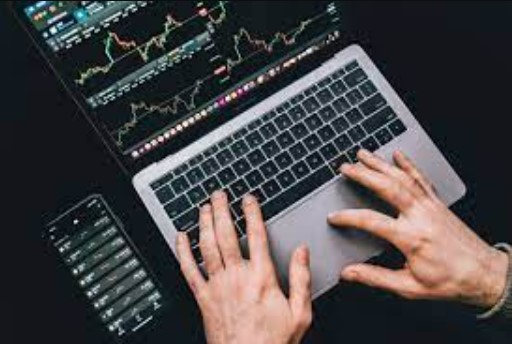O-X.trade Scam Review -Draining Investor Trust and Wallets
Introduction: When Innovation Masks Exploitation
In the booming world of online investing, names like O-X.trade seem to promise progress.
Sleek web design, bold language about “AI-driven trading,” “market accuracy,” and “automated profit engines” — the branding feels modern, global, and trustworthy.
But beneath the digital polish lies a pattern that financial investigators have seen many times before: a facade of legitimacy designed to disarm skepticism.
O-X.trade is not a new revolution in trading — it’s a calculated deception built to mimic one.
The platform’s narrative — blending fintech buzzwords with fake professionalism — has fooled countless users into believing they’ve found a reliable gateway to passive income. In reality, they’ve entered a digital trap engineered to siphon deposits and vanish without a trace.
The Allure: Professional Presentation, Empty Substance
At first glance, O-X.trade presents itself as a fully-functional trading system offering access to forex, crypto, and stock investments powered by proprietary algorithms.
It claims to combine machine learning, automated risk control, and real-time arbitrage systems to “maximize returns while minimizing exposure.”
The website features line charts, performance dashboards, and fabricated testimonials from “clients” reporting consistent daily profits.
Everything about it is designed for one purpose: to simulate authenticity.
The tone, layout, and structure mimic legitimate fintech firms. The logo even mirrors the minimalist aesthetic used by regulated trading platforms.
But dig beneath the surface, and the truth unravels — O-X.trade offers no verifiable company registration, no transparent leadership, and no valid licensing information.
What looks like innovation is actually imitation.
The False Promise of Automation
Central to O-X.trade’s pitch is automation. It claims that its trading system uses cutting-edge algorithms capable of analyzing thousands of market variables per second — identifying opportunities faster than any human could.
In theory, that would make O-X.trade part of the elite few platforms leveraging genuine AI for market prediction.
In practice, it offers no documentation, research, or proof that such a system exists.
There are no white papers, no developer names, no patents, and no disclosures about data sources or model performance.
What O-X.trade calls “AI” is, in reality, a marketing term — not a product feature.
The site’s entire “technology” section reads like a collage of buzzwords strung together to sound futuristic while providing zero evidence.
It’s a language designed not to inform, but to intimidate with sophistication — convincing potential investors that complexity equals credibility.
The Recruitment Funnel: How Victims Are Targeted
O-X.trade doesn’t rely on chance visitors. It actively recruits through social media ads, fake endorsements, and aggressive marketing funnels disguised as “financial education opportunities.”
Common tactics include:
-
Paid ads claiming O-X.trade is “partnered with global hedge funds.”
-
Fake celebrity testimonials supposedly recommending the platform.
-
“News articles” (actually paid press releases) announcing its “launch into North America.”
Once a user signs up, a representative — often called an account manager or senior analyst — makes contact via phone, WhatsApp, or email.
The communication feels professional and supportive, with personalized attention given to each new client.
But these representatives are not advisors. They’re trained persuaders, operating from offshore call centers, following scripts that escalate investment levels step by step.
Step One: The Trial Investment
The entry deposit is modest — typically around $250.
After payment, the platform’s dashboard begins to display trading activity almost immediately: charts move, balances rise, trades appear in progress.
It’s all part of the illusion.
The trades aren’t real; they’re simulated visualizations generated by a script to mimic live trading data.
Users believe they’re earning small but consistent profits. In reality, they’re simply watching a fabricated performance designed to build confidence.
This is known in financial fraud circles as the “proof of concept trap.” It’s the critical psychological phase where the user transitions from cautious to committed.
Step Two: The Upsell
Once investors see those first “gains,” O-X.trade’s representatives intensify their persuasion. They propose higher-tier investment options promising access to premium AI models or faster trade execution.
Typical upgrade names include:
-
Gold Trader Program — minimum $5,000
-
Platinum Investor Tier — minimum $10,000
-
Quantum Edge AI Access — minimum $25,000
Each upgrade is framed as a time-sensitive opportunity. The language shifts from advisory to emotional:
“The algorithm is hitting record accuracy this week — you don’t want to miss this window.”
Investors, buoyed by apparent early success, often comply.
Behind the scenes, no new tier exists. The money goes directly into untraceable crypto wallets or offshore accounts controlled by the fraud network.
Step Three: The Stall and Vanish
When users eventually try to withdraw funds, O-X.trade’s true nature becomes clear.
The system begins returning error messages.
Support replies with generic excuses:
“Your account is under security verification.”
“Withdrawal processing is delayed due to market volatility.”
“Compliance review required before release of funds.”
Sometimes, a small portion of funds is released initially — a deliberate move to create false reassurance.
But as soon as larger withdrawal requests appear, communication stops entirely.
Customer service disappears. The “advisor” numbers go silent.
And within weeks, the O-X.trade domain often changes servers or becomes inaccessible.
It’s a classic exit scam pattern — a digital ghosting that leaves no trace except victims’ financial losses.
Anatomy of Deception: Red Flags Ignored Too Easily
Even sophisticated investors sometimes overlook the telltale warning signs embedded in O-X.trade’s structure.
Each red flag, when isolated, seems minor — but together, they form a blueprint of systematic fraud.
-
Anonymous Operations – No legal address, no leadership team, no company registration in any jurisdiction.
-
Unverifiable Trading Results – Charts and performance data cannot be cross-checked against any external exchange or broker record.
-
Crypto-Only Payments – By avoiding fiat transactions, the platform eliminates any banking oversight or refund potential.
-
Fabricated Testimonials – Profile images are stock photos reused across unrelated sites.
-
Aggressive Marketing – False media coverage and manipulated endorsements amplify the illusion of legitimacy.
-
Withdrawal Obstructions – The final and most devastating red flag — once deposits exceed $5,000, accounts are often “locked pending review” indefinitely.
Tracing the Network: Digital Forensics Reveal Familiar Patterns
O-X.trade is not an isolated operation. Its infrastructure links to a wider network of clone websites launched and abandoned in rapid cycles.
Investigators have identified matching design templates, domain registration patterns, and backend scripts used across at least six identical trading scams under different names.
These include:
-
Identical “AI trading” claims
-
Nearly word-for-word privacy policies
-
The same visual dashboard
-
Recycled customer service email structures
This points to a single organized group specializing in short-term scam platforms — each designed to run until complaints or exposure mount, then vanish and reappear under a new domain.
O-X.trade is simply the latest iteration of this ongoing digital fraud carousel.
The Psychology Behind the Scam
O-X.trade’s success lies not in technological complexity but in psychological precision.
The site exploits three emotional levers with expert timing:
-
Trust Through Design – The website mimics legitimate brokers, making users drop their guard.
-
Excitement Through Progress – The fake profits trigger dopamine responses that encourage deeper commitment.
-
Fear of Missing Out (FOMO) – The advisors create artificial urgency with “limited access” claims, ensuring quick decision-making without due diligence.
Each stage of the interaction is choreographed to convert doubt into action.
The scammers aren’t guessing; they’re applying behavioral economics — using data-driven manipulation to push human confidence past rational limits.
Regulatory Context: The Danger of Grey Zones
O-X.trade thrives in the regulatory shadows where enforcement lags behind innovation.
Because it accepts crypto payments and operates across borders, traditional investor protection frameworks struggle to intervene.
This loophole allows platforms like O-X.trade to function openly for months, even while complaints circulate.
By the time authorities act, the site has often migrated — domain changed, hosting moved, branding rebranded.
Each reincarnation resets its digital footprint, effectively erasing accountability.
The Aftermath: Disappearing Funds, Lingering Damage
The financial losses caused by O-X.trade range from hundreds to tens of thousands of dollars per investor.
But the emotional cost often runs deeper.
Victims describe not only losing savings but also confidence in their judgment. The sense of betrayal cuts deep, especially for those who believed they were joining a legitimate fintech wave.
The sophistication of O-X.trade’s presentation makes recovery difficult.
Its operators rely on that — on the embarrassment that keeps victims silent, on the complexity that keeps authorities slow, and on the confusion that keeps new investors curious.
Conclusion: A Pattern of Trust Abuse
O-X.trade presents itself as an intelligent trading ecosystem. In reality, it’s a digital mirage — a textbook example of how cyber-enabled financial fraud has evolved.
Its operators understand that in an age of AI fascination, credibility can be manufactured through design alone.
They don’t need to build a functioning product — only the illusion of one.
For every victim, O-X.trade serves as a stark reminder that transparency, verification, and traceability remain the cornerstones of legitimate investing.
Any platform that hides its ownership, fabricates data, and blocks withdrawals — no matter how futuristic its language — belongs not in the world of innovation, but in the growing archives of online financial deception.
Report O-X.trade Scam and Recover Your Funds
If you have lost money to O-X.trade, it’s important to take action immediately. Report the scam to Jayen-consulting.com, a trusted platform that assists victims in recovering their stolen funds. The sooner you act, the better your chances of reclaiming your money and holding these fraudsters accountable.
Scam brokers like O-X.trade continue to target unsuspecting investors. Stay informed, avoid unregulated platforms, and report scams to protect yourself and others from financial fraud.
Stay smart. Stay safe






